Fighting The French & Indian War On The Tabletop: Part Two – Defending Fort Necessity
December 14, 2015 by crew
Welcome back to the series where we’ll be looking at the opening moves of the war including the construction and fall of Fort Necessity, the Braddock Expedition up to the Battle of the Monongahel, and a quick look at the basic tactics and equipment of the day.
You can catch up on Part One of the series HERE.
Washington Moves Out
After the Battle of Jumonville Glen Washington moved his troops along with those of the Half-King’s to Great Meadows where they began construction of a Fort known as Fort Necessity. Washington believed that he could defeat the French at Fort Duquesne thinking a force of only 500 tired and poorly supplied troops occupied it.
Believing his force to be superior Washington left with his 300 Virginian Provincials and headed toward Fort Duquesne leaving 100 South Carolinians behind under the command of James Mackay to defend the fort. Washington however was wrong.
One of the biggest blows to the defenders of Fort Necessity was the departure of Washington’s Native Allies including the Half-King himself who did not believe that Washington could win if attacked by the French. With the loss of his Native American Allies Washington decided, after deliberating with his fellow officers, to retreat from their attack on Fort Duquesne back to Fort Necessity.
As Washington retreated Ensign Jumonville’s Brother Louis Coulon de Villiers was leading a force of approximately 600 French and 100 Native American’s towards Washington.
Defending Fort Necessity
With de Villiers advancing at a faster rate than Washington the Virginia Provincials were forced to discard anything that was deemed unnecessary in order to stay ahead of the French force. Washington arrived at Fort Necessity on July 1st and began to dig trenches. Two things happened on July 2nd that made the defence of Fort Necessity almost impossible.
Firstly the forts supplies had been almost totally depleted forcing the defenders to either forage for food under threat of imminent French attack or go hungry. Secondly and perhaps most importantly it began to rain, wetting the trenches, soaking powder and creating mud pits.
A major flaw in the construction of Fort Necessity was its close proximity to a tree line with most sources stating it was within 100 yards which is an effective range of a musket in the hands of an expert sharpshooter. On July 3rd the French Army advanced upon the fort and begun to lay siege to it by sniping from the trees as well as forming up to attack Washington’s troops.
Seeing the enemy forming Washington ordered an advance which was countered by a charge from the French. Washington ordered his troops to halt and fire in an attempt to stop the French charge which was done by the Regulars but not by the Virginians who instead retreated back to the fort. They were soon joined by Washington and the Regulars who were vastly outnumbered.
Surrender
On the 4th of July Washington surrendered the fort and accidently admitted to the murder of Ensign Jumonville before beginning the departure from the fort. As the defenders of Fort Necessity left the fort their baggage was looted by both French and Native American troops. Washington ordered his troops to not resist, not wanting to spark violence and a massacre.
Washington delivered his report to Governor Dinwiddie who thanked him for his efforts blaming other colonies who did not send troops and a poor supply structure for Washington’s failure.
The Braddock Expedition then set out from Fort Cumberland in late May of 1755 with the goal to take Fort Duquesne from the French and establish a presence in Ohio Country. General Edward Braddock led the expedition of approximately 2100 men and eight native allies containing men of the 44th and 48th Regiments who were British Regulars and approximately 500 Provincial Troops from the colonies.
We’ll discuss the Braddock Expedition in more detail in the next article.
Uniforms & Tactics
There are three major things that everyone thinks of and that attract people to the era of mid 1750’s and the Napoleonic Wars and that is mainly the uniforms, the weapons and the tactics. To a normal person standing in the open in a line trading volleys with no cover often at very close ranges may seem like utter insanity as it is the modern equivalent of having to expose yourself to fire.
When a modern shooter takes a shot parts of their body are exposed and this cannot be helped with the same being true for a soldier of the era we’re discussing. With a firing time of two rounds a minute and an effective range of fifty yards the musket is a very interesting weapon.
Something which seems utterly terrifying to us is the principle of the first volley. As the enemy approach your line they would halt and dress their ranks in order to give the most effective volley possible but this would mean that they would immediately come under a volley as soon as they entered range.
Imagine yourself as a private in the French army advancing towards a British regiment knowing full well that you’ll be shot at before you get a chance to fire and not only that but you’ll be expected to just stand there and ignore it in order to maintain the unity of your regiment so that it doesn’t become disorganised and a target for cavalry who you will not be able to escape from.
Musket Fire!
Many people will tell you that a musket is an inaccurate weapon and while this is true it is widely overstated. A test done by the YouTube channel cdsadler (with whom I have no affiliation apart from also being an Australian) demonstrates that a Brown Bess Musket can be fired with a degree of accuracy from a prone shooter at a range of around 100 yards.
However when fired standing up the results were much worse. One of the biggest contributors to the inaccuracy of a musket was also some soldier’s tendency to turn their head away from their muskets or close their eyes to avoid the black powder smoke which would be coming from their musket not to mention the muskets of those nearby.
One of my favourite aspects of the period is the uniforms of the various armies and units of the period. From the White uniforms of the French to the massive variety in the American Colonies there is plenty of choice available to those wanting to collect a force from this period.
If you would like to write an article for Beasts of War then please contact me at [email protected] for more information!
"A major flaw in the construction of Fort Necessity was its close proximity to a tree line with most sources stating it was within 100 yards which is an effective range of a musket in the hands of an expert sharpshooter..."
Supported by (Turn Off)
Supported by (Turn Off)
"To a normal person standing in the open in a line trading volleys with no cover often at very close ranges may seem like utter insanity as it is the modern equivalent of having to expose yourself to fire..."
Supported by (Turn Off)































![How To Paint Moonstone’s Nanny | Goblin King Games [7 Days Early Access]](https://images.beastsofwar.com/2024/12/3CU-Gobin-King-Games-Moonstone-Shades-Nanny-coverimage-225-127.jpg)









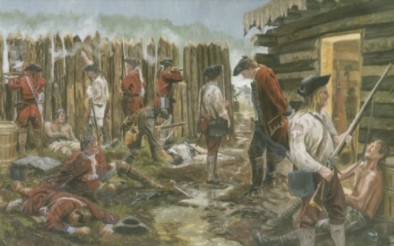
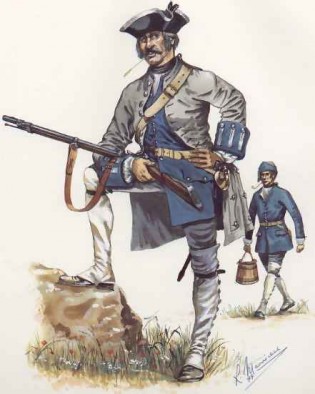

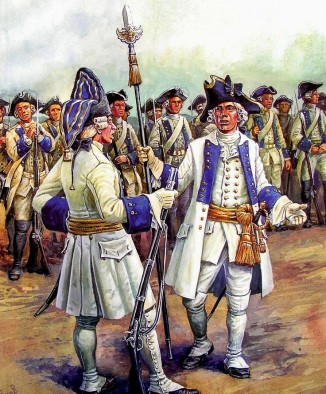
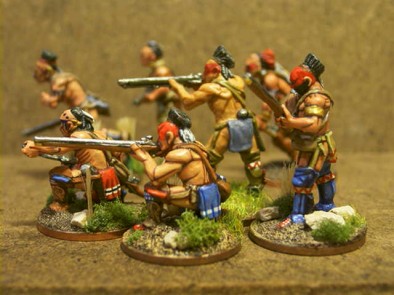
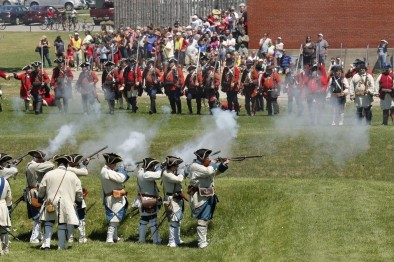

































Well written – an interesting period
While the history and other information is interesting to read through, where are the representative tabletop battles?
Next article will have one so far it’s just been a 15 minute massacre and a short siege but next article is the Battle of the Monongahela which will have a scenario and pictures of a game
Looking forward to it. Will be interesting to see how Muskets & Tomahawks plays out.
I enjoyed reading that.
I would never have called that a Fort, more like a shed!
You really got me interested in the period. Waiting for some more stuff.
this is grate news for us who play games in this time period
cant get better,
information is king,
Great article, and great amount of historical detail. I also like how you included an explanation of how black powder tactics weren’t as crazy as Hollywood movies usually make them out to be.
The F&IW is really a good period and I’ve been tempted for a few years to get involved. 2016 may be the year as I seem to be going American for projects with big all in one kits coming from Warlord and the Perrys.
Anyone interested in more background I would recommend Allan W Eckerts books from the winning of America series
A fascinating period in history and really well written and a really well researched article enjoyed the first one this is better and I if it continues in that vain then the third I already waiting for.
Very interesting. Could you please put descriptions on the pictures you post. Would be great to know what I am looking at, regarding both period drawings, pictures of places and miniatures.
Hover your mouse over the pictures